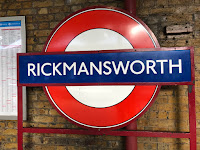My last African garden blog was written before our summer break, when I had relinquished the reins of the school community garden to our HOS, and settled for a few pumpkin plants in an old bed.
Well, I arrived back in Abuja and snuck out of quarantine to take a look. The community garden was lush and full. True to his word, our HOS had picked out a variety of flowering shrubs and pretty annuals. I found moss rose, impatiens, coleus and marigolds. Others that I had to look up were Angelonia (snapdragon variety), globe amaranth (edible), jungle geranium, cockscomb and mussaenda (aka red flag bush). I am sure quite a bit of money went into the purchasing of plants that will flower continually in
this environment and attract butterflies.
My little beds, on the other hand, were overgrown with weeds, infested with snails, and the pumpkin plants were rotting away. My desire to make something on my own, without outside help, had backfired. The garden could not go 6 weeks unattended during the rainy season.
I quickly pulled up all the weeds, relocated the snails, and planted some more seeds. With a bit of luck I could resurrect the garden.
I was surprised to find my patio pots had produced a small pumpkin and two tomato plants while I was away. I have a housekeeper who faithfully waters my pots, and the seeds must have been in the compost created from our kitchen scraps. This encouraged me seed some more pots with herbs, from seeds I had brought from the US. I have tried this once before when living in the Marshall Islands, and failed due to the salt air. Only certain hardy plants would grow in that environment.
The first setback I found with this west African climate was the amount of rain/humidity. The tomatoes developed bottom end rot due to the calcium being washed away by the heavy rains. My herbs, such as rosemary and oregano, which like drier sandy soil, also struggled to grow to any size.
The garden snails were attacking my beans, kale and corn. On closer inspection I found various other pests: caterpillars, grasshoppers and varieties of ants. I don't know which was responsible, but I would find anything I transplanted stripped bare of leaves the
next day.
In the beautiful community garden I was dealing with quite different issues. The plants were thriving and the beds were carefully tended by a full time gardener. But the teachers were questioning the whole design, which left little room for students to plant and grow their own plants. The HOS finally agreed to clear one bed, by putting the flowers into pots around the perimeter. I ordered pots and dirt for this purpose but soon realized that this plan wouldn't work. The pots were far too small to sustain these shrubs that could easily grow into small trees. We finally compromised by replanting the shrubs into a border
outside the picket fence. The 1st grade was then able to plant their watermelon seeds between the anthills.
I have small victories, mainly due to luck rather than gardening expertise. My sunflowers are stunted, but flowering. I planted an early prolific straightneck squash that seems to be producing despite the snails. The corn is stunted as well, looking like a dwarf variety. I have had great success with basil and mint, and have been able to give seedlings away to neighbors and friends. I have ginger growing from root, and cuttings of basket plant and tradescantia that are taking over my veranda.
I found some plant food in an unlikely corner of the grocery store and have been instrumental in the start of a small compost heap in the school grounds. Getting the HOS to agree to the compost was a feat in itself, but the daily contributions of kitchen scraps, paper and clippings from the grounds soon got out of hand. The site was starting to resemble a tip with cockroaches crawling over the trash. I shut the whole operation down after going through the piles and pulling out rubber gloves and plastic forks.
On arriving here, I saw west Africa as a gardener's paradise, with rain and heat and sunshine. So much grows naturally and the streets are lined with nurseries selling all types of shrubs and trees. Often, the green growth threatens to take over the city. Every available yard is planted out with corn stalks and fruit trees...
....but it isn't only the plants that are thriving. The insects are alive and well, threatening to find and eat anything I put in the earth. The rain not only waters the plants, but strips the earth of nutrients with its gully washers. Then when the dry season comes, the sun will bake what is left. This is definitely a gardener's challenge.












